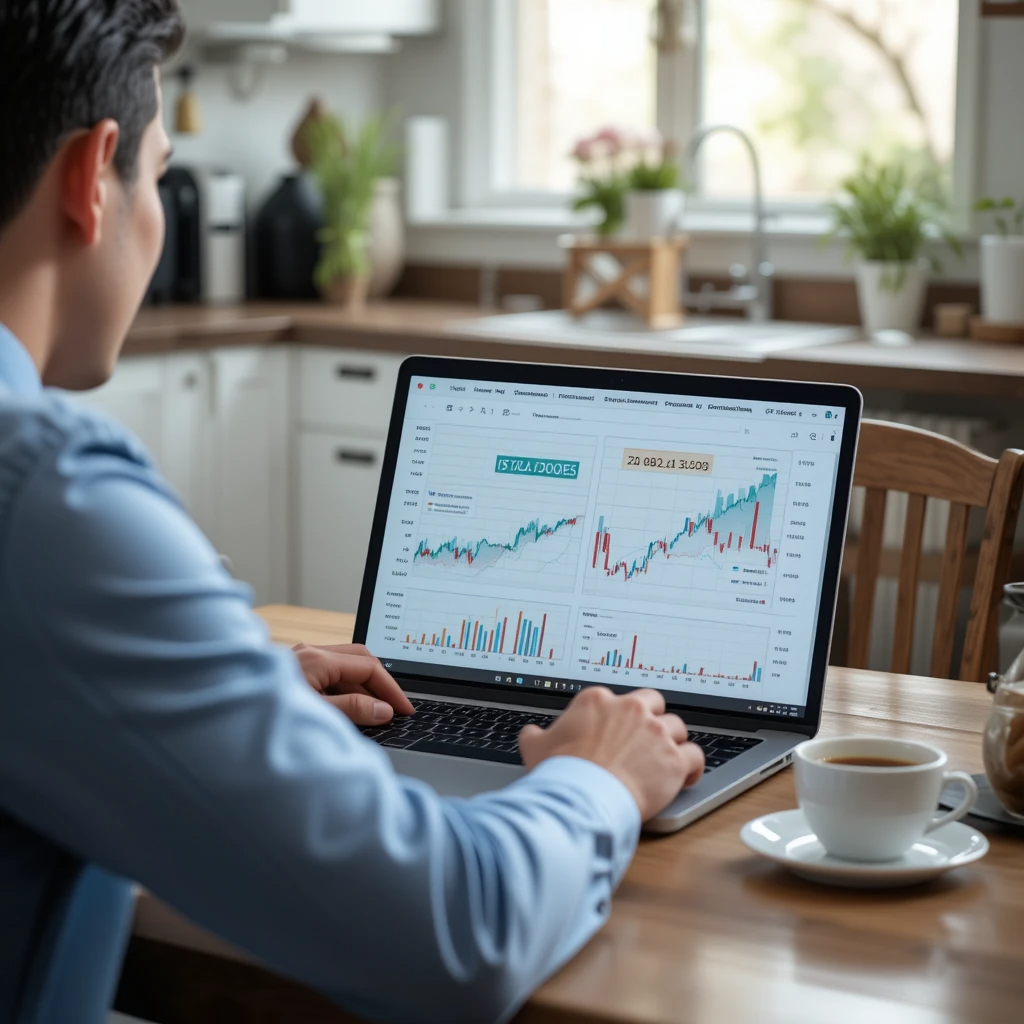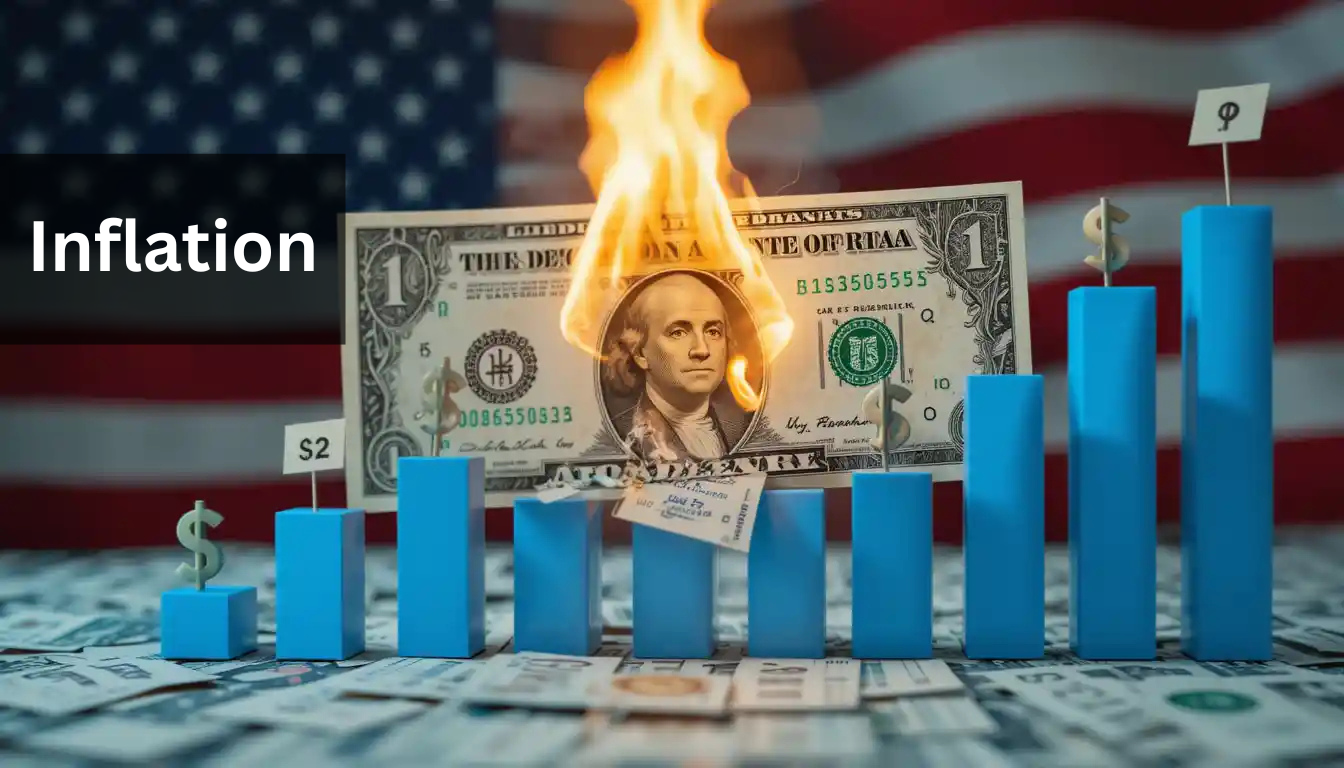Inflation is a term that has become more prevalent in the media and financial reports lately, but what does it really mean? It’s a critical economic factor that affects individuals, businesses, and governments alike. In simple terms, inflation refers to the rate at which the general level of prices for goods and services rises, causing purchasing power to fall. Whether it’s the higher cost of groceries, rising fuel prices, or increased rent, inflation directly influences our daily lives.

If you’re looking to understand how inflation works and how it might impact your finances, this blog will walk you through its definition, causes, current inflation rates, and examples. Plus, we’ll explore how tools like the inflation calculator can help you track inflation in real-time.
What Is Inflation?
Inflation is defined as the continuous increase in the price of goods and services over time. When inflation occurs, each unit of currency buys fewer goods and services than it did before. This erosion of purchasing power means that money loses value over time.
But why does inflation happen? And how does it impact various sectors of the economy, such as the cost of clothing or other daily expenses?
Causes of Inflation
Understanding the causes of inflation is crucial for anyone seeking to make informed financial decisions. Here are the key factors that contribute to inflation:
Demand-Pull Inflation: This type of inflation occurs when demand for goods and services exceeds the supply. As more people or businesses vie for limited goods, prices naturally rise. For instance, during periods of economic growth, consumer demand for products like clothing might increase, driving up prices.
Cost-Push Inflation: This happens when the cost of production increases, leading businesses to raise their prices. Higher wages, increased raw material costs, or a rise in energy prices can all contribute to this type of inflation.
Built-In Inflation: Often referred to as a wage-price spiral, this occurs when workers demand higher wages to keep up with rising living costs. In turn, businesses raise their prices to compensate for these higher wages, leading to a cycle of rising wages and prices.
Monetary Inflation: When governments increase the money supply too quickly, it can devalue the currency and lead to inflation. Central banks may do this to stimulate an economy, but if done excessively, it can result in inflation.
Types of Inflation
Not all inflation is created equal. There are different types of inflation that economists categorize to better understand its effects on the economy:
- Mild Inflation: This is a gradual increase in prices and is generally considered a normal part of a growing economy.
- Hyperinflation: This extreme form of inflation occurs when prices increase uncontrollably, often at a rate of 50% or more per month. Hyperinflation is rare but devastating, as seen in countries like Zimbabwe and Venezuela.
- Stagflation: A combination of high inflation and high unemployment. This situation is tricky for policymakers because it presents conflicting challenges.
- Deflation: While not technically a type of inflation, deflation is the opposite. It’s a decrease in the general price level of goods and services.
How Inflation Affects Your Daily Life
Inflation has a widespread effect on daily life. From clothing prices to rent, wages, and everything in between, inflation impacts many aspects of life. Here are some areas where inflation is most commonly felt:
- Clothing: As manufacturers face higher production costs due to inflation, prices for everyday items like clothing may rise. Consumers end up paying more for the same product, whether it’s a simple T-shirt or a winter coat.
- Housing: Rent prices and home prices are often directly tied to inflation. With an increase in demand for housing, rents may rise, making it harder for people to find affordable homes.
- Food and Groceries: Inflation leads to higher food prices as the costs of transportation, labor, and raw materials increase.
- Transportation: Gasoline prices are highly sensitive to inflation. As the cost of crude oil rises, drivers feel the pinch at the pump.
By using an inflation calculator, individuals can track how prices have changed over time and estimate how inflation will impact their future purchasing power.
Inflation Rate and Its Measurement
The inflation rate measures the percentage increase in the price of goods and services over a specific period of time. The most commonly used measurement of inflation in the United States is the Consumer Price Index (CPI). It tracks changes in the prices of a basket of goods and services that consumers typically purchase, such as food, transportation, and medical care.

Another important metric is the Producer Price Index (PPI), which measures the prices that producers receive for their goods and services. These prices eventually trickle down to consumers, impacting overall inflation rates.
For real-time data on inflation, you can refer to the inflation chart, which shows the monthly or yearly inflation figures. This chart helps businesses, consumers, and policymakers analyze trends and make informed decisions.
Inflation Example
To illustrate how inflation works, let’s look at an example using the inflation calculator. Imagine you are purchasing a cup of coffee today for $2.50. If inflation increases by 3% annually, next year the same cup of coffee would cost $2.58. While the price increase might seem small, over time, inflation accumulates, leading to higher costs for consumers.
Current Inflation and Its Impact
As of the latest inflation current reports, the United States has been experiencing an increase in inflation rates, particularly in the cost of goods and services. The inflation meaning here is that the average cost of living is rising, and people’s purchasing power is decreasing.
For instance, in the past few years, inflation clothing prices have been rising steadily, as clothing manufacturers face increased material and labor costs. In addition, the inflation rate for essential goods, such as food and housing, has been climbing, causing financial strain for many households.
How to Protect Yourself from Inflation
While inflation is a natural part of the economy, it doesn’t mean you have to suffer the consequences. Here are some ways you can protect your finances:
- Invest in Assets: Stocks, bonds, real estate, and commodities like gold often perform better than cash during inflationary periods.
- Diversify Your Portfolio: A well-diversified portfolio can help protect your wealth against inflation.
- Save Smartly: Use inflation measure nyt strategies to ensure your savings are keeping up with rising prices. High-interest savings accounts, CDs, and inflation-protected securities can offer better returns.
- Use Inflation-Protected Investments: Treasury Inflation-Protected Securities (TIPS) are government-backed bonds that rise with inflation.
FAQ
What is inflation and why does it happen?
Inflation is the rise in prices of goods and services over time, often caused by higher production costs or increased demand.
How does inflation affect my daily life?
It reduces the purchasing power of money, meaning you pay more for the same items, from groceries to rent.
Is all inflation bad for the economy?
Not always. Moderate inflation is normal and can indicate a growing economy, but high inflation can be harmful.
Who controls inflation in a country?
Central banks, like the Federal Reserve, use tools like interest rate changes to manage inflation.
How can I protect my money from inflation?
Investing in assets like real estate, stocks, or inflation-linked bonds can help preserve value.
What is the difference between inflation and deflation?
Inflation means prices are going up, while deflation means prices are falling, which can also hurt the economy.
Why are interest rates linked to inflation?
Raising interest rates makes borrowing more expensive, slowing spending and helping to reduce inflation.
How is inflation measured?
Governments use price indexes, like the Consumer Price Index (CPI), to track changes in the cost of living.
What causes sudden spikes in inflation?
Supply chain disruptions, energy price shocks, or excessive money printing can lead to sharp price increases.
Can inflation ever be completely avoided?
Not entirely. A small amount of inflation is normal in a healthy economy, but careful policy can keep it in check.
Conclusion:
Inflation is a complex economic force that affects every aspect of our lives, from clothing costs to the price of groceries. Understanding what inflation is, its causes, and how it’s measured helps individuals and businesses make smarter financial decisions. With the right tools, like the inflation calculator, and strategies, you can protect your wealth against rising prices.
You May Also Like :
